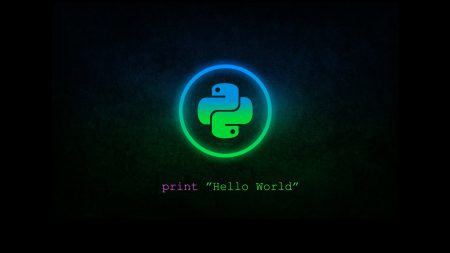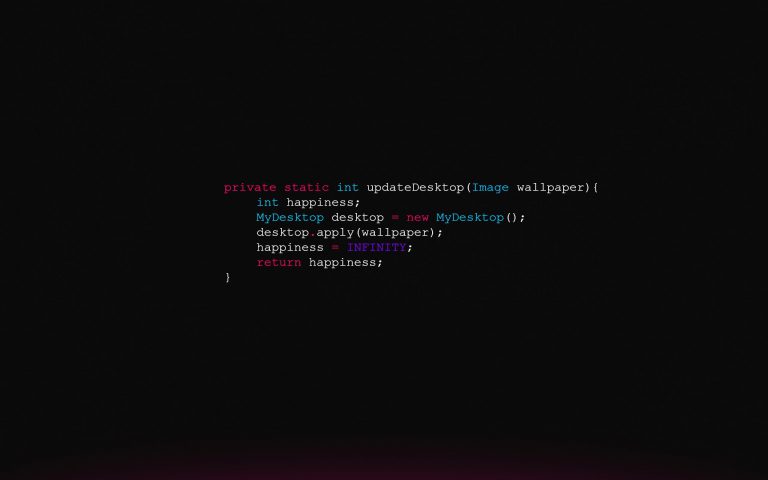We talk a lot about Programming Language on our website. How one language is superior to the other and vice versa. There are tons of programming languages to choose from. All have their own advantages and disadvantages. But, today we are going to be talking about a specific one in detail. We will talk about the Why should you learn Python?
Now, to go deeper into our topic, we need to know about the history of Python. How did it achieve the spot of a successful programming language? Therefore, let’s talk about the History of Python.
History of Python

Let’s start from the beginning. The idea of Python was long before it was actually implemented. The idea of Python was proposed in 1980. But the idea was put into action in 1989. Therefore, the development of language started like 9 years later of the proposal. Moreover, after development, it was published in 1991. So it was like 2 years for them to fully prepare Python.
The man and the personality who introduced Python was Guido Van Rossum. He is the man behind python and therefore, he started the idea of Python. In 1994 the first discussion about Python was made. In between the three years, there was no discussion about the language itself. The discussion forum was actually a great move. As Python is an Open Source Language, it really needed discussion to be done. Even in the past, people were there to help regarding python. On the other hand, there was no place to actually discuss it. This is one of the reasons of Not-So-Good-Start of Python.
Now let’s talk about the versions of Python.
Python 1.0
Python 1.0 was released in 1994 after the release of a Beta 0.9 which was before 1.0. 1.0 version also consisted of two other versions which are Python 1.5 and Python 1.6. Python 1.5 was released in 1997 and 1.6 was released in 2000. Notice there’s a three years gap in all three versions.
Python 2.0
The 2.0 version of python was released in 2000. 2.0 was released in the same year as 1.6. There was a one month gap between both. 1.6 was released in September and 2.0 was released in October. There were more releases in 2.0. Some of them consisted of bug fixes and added new functionality into the language. Below is the list of all the releases.
- 2.1 (2001)
- 2.2 (2001)
- 2.3 (2003)
- 2.4 (2004)
- 2.5 (2006)
- 2.6 (2008)
- 2.7 (2010)
2.1 and 2.2 were released in the same year. Moreover, after two years they released the 2.3 version which had a lot of improvement. It contained many enhancements. Moreover, there were many bug fixes.
Furthermore, in the modern-day, latest version is 3.7.3. Here’s the 3 version list of Python.
- 3.1 (2009)
- 3.2 (2011)
- 3.3 (2012)
- 3.4 (2014)
This shows us that, along with 2.0 series. 3.0 was also made. Therefore, let’s talk about the differences in both versions.
Differences between Python 2.0 and 3.0
3.0 is designed to cope up with fundamental design flaws of 2.0. Python 2.0 has many design flaws. Therefore, it makes it difficult to use. Apart from this 2.0 is really vulnerable to errors and flaws. There are a lot of new features in 3.0 differing from 2.0. On the other hand, 2.0 has fewer features unlike 3.0.
One of the best features of 3.0 is backward compatibility. 3.0 can work with 2.0. On the other hand, you cannot expect 2.0 to have backward compatibility. Therefore, the older versions will not support the new ones. Also, the future of 3.0 release is bright. In contrast with 2.0, who’s development has been stopped. Finally, we are free from the 2.0 version. There will be no further development.
Introduction to Python

Python is one of the fastest-growing languages in the world. In terms of people and libraries. It is one of the most popular languages in the world. No matter what term of programming we talk about, Python is there. Some of the most areas where it can be implemented are, Machine Learning, Software Development, Web Development. Therefore, it is very popular. This is the sole reason that python has become a General Purpose Language. What makes python so special anyways?

it is Interpreted high-level language. Moreover, it has OOP (Object Oriented Programming) concepts involved in it too. But the main significance is that you can also do procedural programming too. It is so flexible that it can be used in any ways you want.

Now still, what makes it so famous and why should we learn it? We have seen Java, C, C++. There are one of the top languages too. In their time that is. In contrast to all these, python is a new language. Basically, the python was there. But no many people used it at that time. Therefore, with the advancement of time, nowadays, the applications of Computer Science people fill with Python are just uncanny.
Let me give you a simple example of why it’s considered a great language. As modern-day research scientists do not like to spend most of the time learning the language, they will go for python which is fairly easy to use with great features. They literally do not have to spend much time learning the programming languages. So what they do is just wait for the easiest language available and once they find it out they are all set. Therefore, Python is really easy to use. The Syntax is simple, so people prefer python over other programming languages even on a bigger scale.
Companies who use Python
Python is being used by many great companies nowadays. Below are a few ones of them
1) Google
Let’s talk about where Google, the big company uses python. Python is like an official language for Google. Without further redo, let’s talk about where is python used at Google.
- Google’s search algorithm is developed by using Python
- Log Analysis is done by using Python
- Tons of Open-source libraries is made using Python
- YouTube by Google uses Python.
- Almost all the machine learning, AI and Robotics are achieved by using Python.
- Hosting websites for google developer which is code.google.com is also made by using Python.
3) NASA
NASA has a whole success story based on Python. Here are some of the uses of Python by NASA.
- Open Source Projects by NASA.
- Solar Physics Project by NASA.
- Astropy Project by NASA
- Apache OCW under NASA
So here we’ve seen two big companies like Google and NASA using Python. Now let’s focus on the name Python for a big. You know that other languages like, C++ or Java, they all have some meaning behind their names. What about Python? Is it just a Snake?
The Name Python

There is a whole story behind the name “Python”. The found of Python Mr. Guido van Rossum is a huge fan of a British movie called Monty Python’s Flying Circus. That is the sole reason why he went with the name Python. Now the question arises, is python easy? And the answer is, let’s find out.
Is Python Easy?
The simple answer is YES! It is the simplest and easiest language in the whole world. Therefore, making it popular for the sole reason of being simple. Even if you are from noncomputer fields or technical background. You can start with Python easily. it’s so easy that even kids can learn python.
The only way to define its simplicity is that “The Syntax is Easy“. But let me clarify this for you that, it’s not easier than any other programming language. Therefore, I never confused python with being an overall easy language. That is because concepts and logics are the same no matter which language we choose. Now let’s talk about the simple syntax of Python.
Syntax of Python
Executing a simple message.
print(“Hello, World!”)
This is going to execute a command on CMD or no matter what software you are using to execute it on.
Indentation in Python is really important, unlike other languages. You cannot execute a successful code if you do not indent it properly. That is because it analyzes itself, what you are meaning to do. Here’s a simple if statement.
Python Indentation
if 1 > 3:
print(“Five is greater than two!”)
If you skip indentation, you will get an error.
Python Variables
The great thing about python is that it automatically detects what is the type of variables. Simply put, there are no variable types on the surface, in python.
a = 5
b = “Subscribe to PewDiePie”
Comments
There are also comments used in Python. The Syntax of writing python is that it starts with ‘#’ hash. Therefore, the rest of the line will be considered as a comment.
#Example of the comment.
print(“Let’s get all techy”)
Now let’s focus on the main topic of this article. Reasons to learn Python.
Reasons To Learn Python

Let’s talk about why you should learn python in today’s world. First of all, let’s talk about why should we even learn to program? So basically, for future needs, programming will be so into the industry that everyone would wonder why didn’t they learn to code in the first place. To have the best job security. Getting a handsome amount of pay. Not moving around a lot and sitting while doing the brain exercises. Making awesome apps.
Most importantly, if you want to do something really exciting, you’ll love programming. It’s just that there are no boundaries to it. Programming is limitless. Now let’s talk about why python specifically? Python is one of the best programming languages and it is becoming even better day by day because of these several reasons. So why should you learn python?
1) Easy To Use
The main significance of python is that it is easy to learn and easy to read. The reason for that is because python is closely related to the English language. Moreover, you should not even need to have really a high-level skill set to actually adapt python. It is free and open-source.
Python is a high-level language and the programmer doesn’t even need to know anything about low-level language. Here’s the tea. You simply write it into simple English and speaking metaphorically, it will convert it into low-level language. Python actually has a very large community since it’s emergence. So, if you have any problems or doubts about it, you can ask freely. You can simply ask questions at the forum and thousands of developers will be available to help you anytime possible. People from Facebook, Twitter and their official forums are always available.
If you compare python with any other language, say C++ or Java. Python has proven to be better and simple than all of these. You don’t actually have to follow some serious complex syntax to actually be able to learn it. It’s simple yet powerful.
Click Here to access the Forum
2) Extensible
Support for Python language is really wide on almost any platform today. It can be Windows, Linux, and Mac. Furthermore, even Playstations now support python. Now python is a pretty vast language. So you can bring in Java and integrate the code. Not to mention also libraries from C or C++. Therefore, it’s really cross-language along with being cross-platform language.
So along with being portable, it’s also extensible.
3) Artificial Intelligence
Artificial intelligence is hotshot into the tech world. When there are really complex calculations in AI systems. Python, with it’s easy to use the library can perform a really difficult task in just a single statement.
Furthermore, there are tons of libraries for Machine Learning. Due to the use of python, Open CV has been made. An open CV has the ability to recognize images. For example, you can detect a face or color of a person. Using the Open CV, we can also detect handwriting too. This has all been done due to the powerful features provided in Python.
4) Validation of Frameworks
A python is a great tool for validating difference frameworks. It’s a hard job testing software. The tester needs to choose a language that is powerful yet easy enough to actually test with less time and precision.
Python is the best solution for a problem like that. It contains many frameworks that can debug and validate software. It also contains one of the fastest workflows. Easy to use, easy to do. It even has more tools to make things even easier. In short words, it provides testing with Cross-platform and Cross browsing support. It has many software testing tools by which the tester can do his work precisely and nicely
5) Huge Data Support
Data has always been so complex to handle. Companies are always working on optimizing data for their languages or when even making a huge data app, other languages have difficulty in doing so. No bore data hassle now. Due to pythons’ huge support for data and parallel computing. There are many data handling libraries in it. So this is a general overview that python can handle a large amount of data.
6) Automation
Many people think that Python is just a programming language. But to put things in the right perspective, it’s the most popular scripting language for Automation out there.
The concept of scripting is that, in scripting, the code is made to execute in the form of scripts. The machine runs that code and all the errors are checked during run time. So you don’t have the hassle to actually check errors by running the whole code. The machine will do real-time. That’s the difference between scripting and compiling languages.
Now moving back to our context. Automation means to automate different tasks. So in the automation industry, Python is the best choice available there.
7) Data Science
Data Science is one of the rising fields in Computer Science. Python is actually made for data scientists. Before the rise of python. The researchers have always been using MATLAB for scientific purposes. But that changed eventually due to the rise of python and some of the most important engines in it. For example NUMPY and PANDAS.
Another most significant feature of python is that it deals with the tabular and matrix data. Imagine being a big company having a large amount of data. Well, with python you can easily get insights into the big chunks of data.
Data Science is a vast field and learning Python becomes imperative if you are embarking on a career in this domain. It is common to see professionals taking up a Python for Data Science course to upskill themselves and gain the relevant skills. It not only saves their time researching the important concepts but also updates them about the latest trends and best practices to be followed for data science projects.




